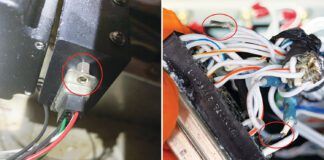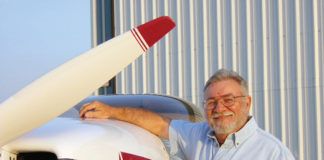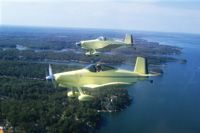Weight Reduction
I enjoyed David Paule’s article about saving weight in aircraft construction [“Stressing Structure,” October 2016]. However, I would like to add another perspective. The average American adult is 17 pounds overweight. If you fly with your average friend in the right seat, that’s 34 pounds of potential weight savings without touching your airframe or replacing the engine. Not only is this weight savings free, but the non-flying benefits are immeasurable.
—David Fisichella
We at the magazine wholeheartedly agree that along with saving weight in airframe construction, losing a little of our personal weight will make both the airplane and the occupants perform better. But it’s hard to resist that deluxe bacon cheeseburger at the airport diner when you’ve spent $100 flying there to get it, isn’t it? Fly healthy, fly longer!—Ed.
Small Trim Tabs
I appreciated Barnaby Wainfan’s column [“Wind Tunnel,” September 2016] where he explained trim tabs in easily understood terms. When I worked for Interstate Aircraft, the new owner told me he wanted to make the Tern a “half-ton pickup of the sky.” I looked at the trim tab and replied that he’d have to redesign the forward stabilizer attach to incorporate a jackscrew trim system, like Piper Cubs have, because the Tern didn’t have enough pitch trim with the one tab, and adding a second tab to the other elevator wouldn’t be enough. Years later, the “new” Tern prototype flew with the same little trim tab…and was certified with a useful load of 800 pounds. So much for the flying half-ton pickup truck, but only due to inadequate trim.
—Andy Gelston
Better Engines
I greatly enjoy your technical articles. Tom Wilson’s story on what you can do for a better engine [“Engine Theory,” November 2016] is a perfect example.
The only comment I have comes from my experience with a Lycoming O-320 in a Spezio Tuholer that I flew for 10 years. At one point, I installed a crossover exhaust manifold and a wooden prop. Combined, a seat-of-the-pants estimate suggests it went from 150 hp to around 175-180 hp. While it really didn’t do much for speed, takeoff and climb improved dramatically.
I think many people would be surprised by the potential increased performance that comes with a more efficient propeller and exhaust system. It might be worth further investigation and a follow-up article. The best part is, neither of these require you to open up the engine.
—Tim C. King
Form 8050-1 Now Online
In “Preparing for Your First Flight” [November 2016], it is stated that Aircraft Registration Application Form 8050-1 is not available online. This is not correct. The form is available online, however, it cannot be filled out and submitted online. It must be mailed in.
—Barry Gloger
We recently heard this good news as well. The wheels of modernization within the FAA turn slowly, but it is good to know that they are turning. The form can be downloaded here. —Ed.
Write to [email protected].




